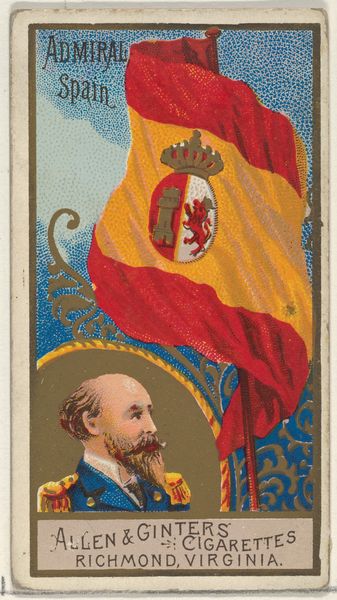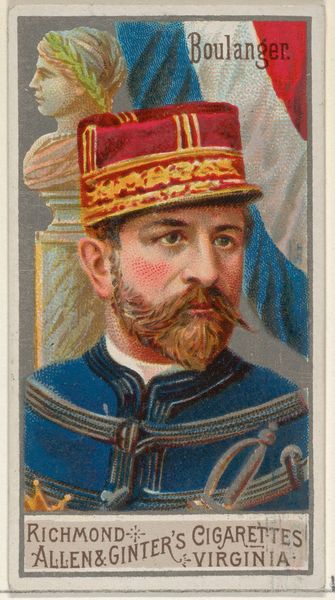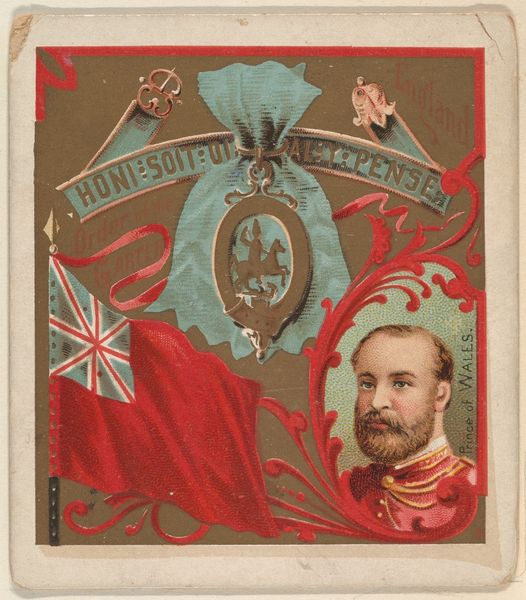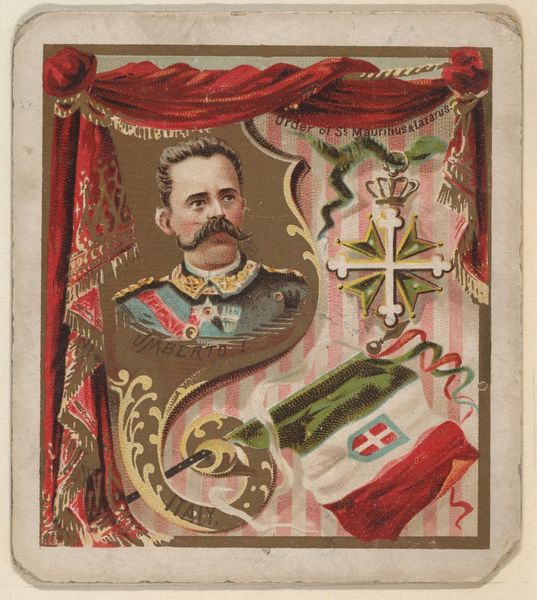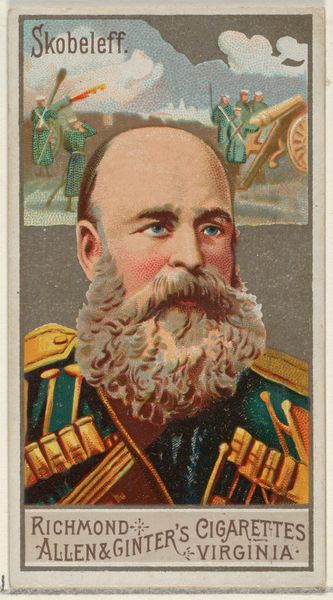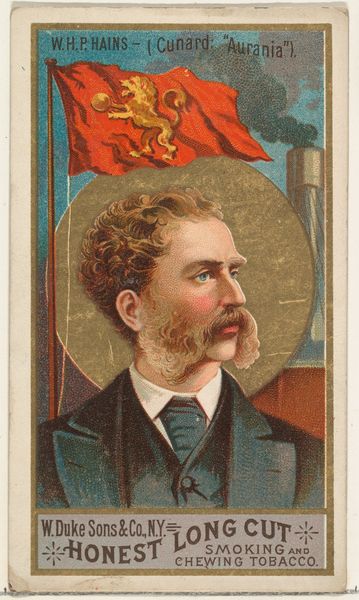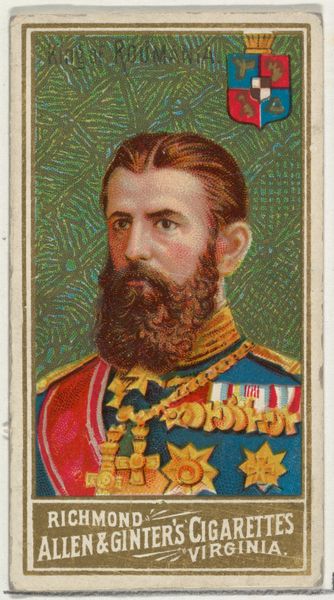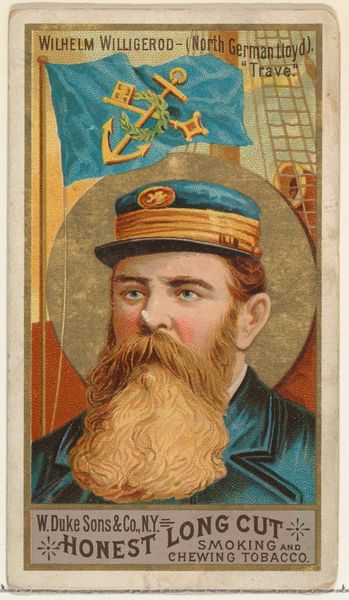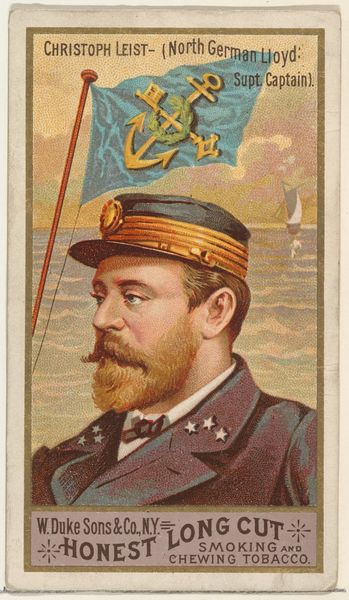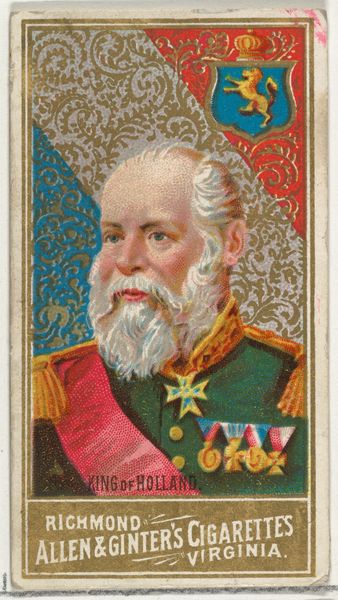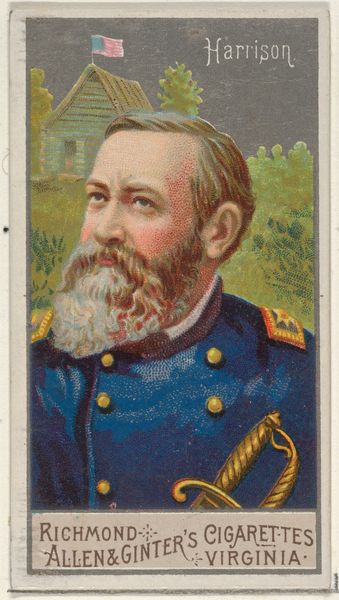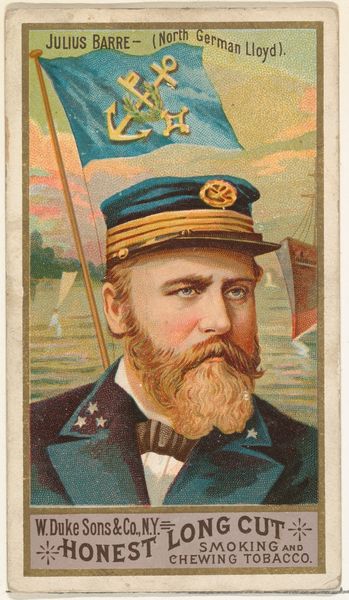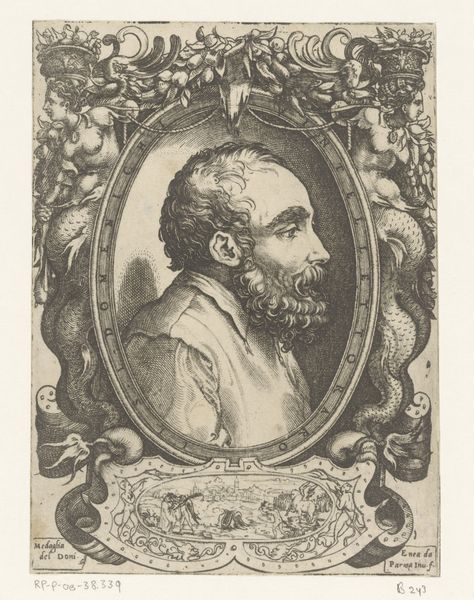
Prince of Wales Standard, from the Naval Flags series (N17) for Allen & Ginter Cigarettes Brands 1886 - 1891
0:00
0:00
drawing, print
#
portrait
#
drawing
# print
#
caricature
#
academic-art
#
portrait art
Dimensions: Sheet: 2 3/4 x 1 1/2 in. (7 x 3.8 cm)
Copyright: Public Domain
Curator: It’s quite something to consider that this image of the “Prince of Wales Standard,” now residing at the Metropolitan Museum of Art, was originally purposed for an Allen & Ginter cigarette card around 1886-1891. The format certainly speaks to that, doesn't it? Editor: Indeed! My first thought is how unexpectedly elaborate it is for a cigarette card. There’s such detail—almost painstaking— in both the portrait and heraldic design above it. What strikes you most about its materiality and production? Curator: What draws me in is the construction of identity here. Consider how empire, luxury, and masculine power converge. This small card subtly links the Prince of Wales to notions of sophistication through a global trade network sustained by, it is worth saying, exploitation and inequality. It makes one consider his gender presentation, the implications of that connection to this popular media and global capitalism at large. Editor: Precisely. Think of the processes that would need to happen, to have the portrait art drawn, the colors reproduced. Consider this too—tobacco cultivation relied on particular labor forces. This sort of imagery circulated within a larger framework of both making and distribution—a framework rooted in power structures and consumption practices. Curator: And the portrait itself. The rosy cheeks, the very deliberate presentation of wealth, and, not to dismiss the literal presentation of his chest but, it feels rather deliberate, even playful within its inherent confines. Is it a promotion, an attempt to normalize empire through familiarity, or both? Editor: Yes, the choice to display heraldic symbols as signs of quality speaks to the relationship between material aspiration, manufacture, and class structures inherent to this print. I believe that even in something that we consider as ephemeral, a closer analysis pushes one to consider production. Who decided that this print would sell cigarettes? Curator: I think approaching these consumer goods with a critical lens allows us to expose both the intentions and cultural ideologies woven into even the smallest objects, providing, ironically, larger connections to gender and race issues, along with commercial networks during the late 19th century. Editor: Well put! Analyzing process and materials really does offer a tangible route toward deconstructing broader societal issues that go unseen in a portrait on this scale.
Comments
No comments
Be the first to comment and join the conversation on the ultimate creative platform.
